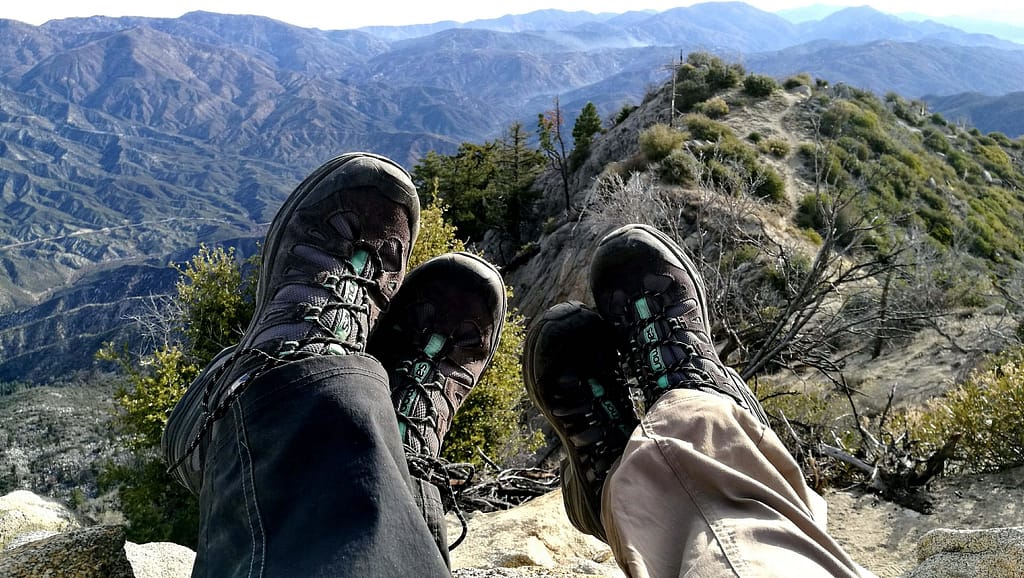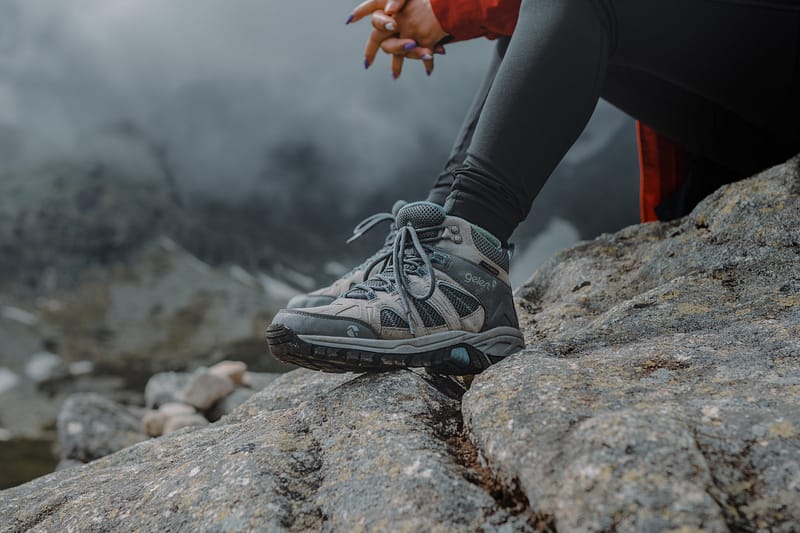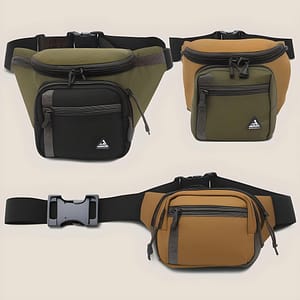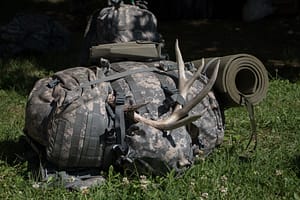Are you tired of soggy socks and squishy shoes ruining your epic hikes? We’ve got the solution to all your water hiking woes. Introducing the ultimate companion for your outdoor escapades – water hiking shoes. These bad boys are designed to keep your feet dry and comfortable while you conquer nature’s watery obstacles. So, lace up your boots and get ready to dive into the world of water hiking shoes with us. Trust us, your feet will thank you later.
What types of water hiking shoes are available?
There are a few different types of water hiking shoes out there that will keep your feet dry and comfortable while you conquer those epic trails. Let’s dive right in, shall we?
1. Water Sandals:
Ah, the classic water sandal. These sandals are perfect for those who love to feel the wind between their toes while they trek through rivers and streams. They usually have adjustable straps and a grippy sole to ensure a snug fit and prevent any embarrassing slips and slides. Plus, they dry super quickly, so no soggy feet for you.
2. Water Shoes:
If you’re looking for something a bit more substantial, water shoes might be your jam. They are like a cross between sneakers and sandals, providing more protection and support for your feet. Water shoes typically have a sturdy sole with excellent traction, making them ideal for rocky terrains and slippery surfaces. Plus, they often come with a drainage system to let water escape, so you won’t be lugging around extra weight.
3. Aqua Socks:
Now, if you’re all about that barefoot feel but still want a little bit of protection, aqua socks are the way to go. They’re lightweight, flexible, and fit snugly around your feet, giving you that barely-there feel. It’s like walking on clouds, but with a layer of badassery. Whether you’re wading through a river or exploring a rocky shoreline, aqua socks will keep your feet comfortable and protected.
But don’t be fooled by their delicate appearance. Aqua socks may look like cute little slippers, but they’re built to withstand the toughest terrains. The rubber sole provides excellent grip, so you can confidently navigate slippery rocks and moss-covered logs. And let’s not forget about the protection they offer. Aqua socks are designed to shield your feet from sharp rocks, shells, and other potential hazards lurking beneath the water’s surface.
What features should I look for in a good pair of water hiking shoes?
With so many options out there, how do you know which ones to choose? Fear not, my fellow outdoor enthusiast, for I am here to guide you through the treacherous waters of shoe shopping and help you find the perfect pair. Here are some features you should look for in a good pair of water hiking shoes:
1. Water Resistance:
This one is pretty obvious, but it’s worth mentioning. You want shoes that can handle getting wet without turning into sponges. Look for shoes made from materials like neoprene or mesh that are designed to repel water. Trust me, soggy feet are not a good look.
2. Quick Drying:
Nobody wants to walk around with squishy shoes all day, so make sure to choose shoes that dry quickly. Look for shoes with drainage holes or mesh panels that allow water to escape easily. This will ensure that your shoes are dry and ready for action in no time.
3. Traction:
When you’re hiking in wet conditions, you need shoes that can grip like a vice. Look for shoes with a sturdy rubber outsole that provides excellent traction on slippery surfaces. You don’t want to be sliding around like a penguin on ice, do you?
4. Support and Stability:
Hiking can be a real test of your balance and coordination, especially when you throw water into the mix. That’s why it’s important to find water hiking shoes that offer ample support and stability. Look for shoes with a reinforced toe cap and heel counter for extra protection and stability. A well-cushioned insole will also help absorb shock and provide added comfort.
Now, let’s talk about fit. It’s crucial to find water hiking shoes that fit snugly but comfortably. You don’t want your shoes to be too tight and restrict your movement, but you also don’t want them to be too loose and cause blisters or slips. Look for shoes with a secure lace-up closure that allows you to adjust the fit to your liking.
When it comes to style, well, that’s entirely up to you. Water hiking shoes come in all sorts of colors and designs, so you can choose the one that suits your personality. Whether you want to blend in with nature or make a bold fashion statement, there’s a pair of water hiking shoes out there for everyone.
Now that you know what to look for in a good pair of water hiking shoes, it’s time to hit the trails and enjoy the great outdoors. Just remember, these shoes may be tough, but they’re not invincible. Be mindful of the terrain you’re trekking through and always exercise caution.

How do I choose the right size water hiking shoes?
Hey there, fellow adventurer! So, you’re ready to take on the great outdoors and embark on an epic water hiking adventure. Good for you! But before you can conquer those raging rivers and conquer those treacherous trails, there’s one important thing you need to do – find the perfect pair of water hiking shoes. And not just any pair, my friend, but the right size. Trust me, you don’t want to end up with shoes that are too small and squeeze your toes like a vise, or shoes that are too big and make you feel like you’re wearing clown shoes. So, let me guide you through the process of choosing the right size water hiking shoe and get you one step closer to your next wild escapade.
First things first, forget about your regular shoe size. Water hiking shoes are a different breed altogether. So, step into the world of water hiking shoe sizes with an open mind and a sense of adventure. The sizing for these shoes can be a bit tricky, so it’s important to measure your feet properly to ensure a snug and comfortable fit.
Start by grabbing a measuring tape (or a ruler if you’re feeling old-school) and measure your feet while standing. Yeah, I know, it sounds like a weirdly intimate moment with your feet, but hey, we’re in this together, right?
Measure the length of your feet from the heel to the longest toe. Make sure to measure both feet because sometimes one foot is slightly bigger than the other.
How do I choose the right size water hiking shoe?
So, you’re planning on conquering some wet and wild trails? That’s awesome! But before you dive headfirst into those crystal-clear waters, you’re going to need a solid pair of water hiking shoes. And size matters.
First things first, let’s talk about why size matters when it comes to water hiking shoes. You see, unlike regular hiking shoes, water hiking shoes are designed to be worn in wet conditions, where your feet are constantly in contact with water. And guess what? Water tends to make things…well, slippery.
If your water hiking shoes are too big, your feet will slide around inside, causing discomfort and increasing the chances of blisters. On the other hand, if they’re too tight, you’ll feel like you’re wearing a pair of medieval torture devices, and your toes may resemble a bunch of angry sausages after a few hours on the trail. Trust me, you don’t want that!
So what’s is the right size?
Now, let’s get down to the nitty-gritty of choosing the right size. The first step is to measure your feet, and no, I don’t mean with a ruler. Grab a sheet of paper, a pen, and a friend (preferably one who won’t make fun of your feet) and get ready for a fun little exercise.
Trace your feet on the sheet of paper while standing up. Make sure to stand straight, none of that slouching business! Your friend can help you out by holding the paper in place or, if they’re feeling extra helpful, they can even do the tracing for you. Just make sure they don’t draw funny faces on your feet. We’re trying to be serious here.
Now, here’s the tricky part. Your feet might not be exactly the same size. It’s like they have a mind of their own, those little rascals. So, make sure to measure both feet and write down the measurements separately. We don’t want any foot size discrimination here.
Now that you have your measurements, it’s time to consult the internet. With just a few clicks, you can find a shoe size conversion chart and find out how your foot size translates to different systems of measurement, from US to UK to European sizes and everything in between.
But, hold on a second. Before you start frantically typing “shoe size conversion chart” into that search bar, let me save you some time and hassle. I’ve got your back, my camping buddy. I’ve done the research for you, so you can sit back, relax, and let the internet do its magic.
One of the best places to find a shoe size conversion chart online is through shoe retailer websites. They often have handy-dandy conversion tools that allow you to input your measurements and instantly see which size is a perfect fit for you. Just make sure to double-check the accuracy of the chart, as different brands may have slight variations in their sizing.
How much do water hiking shoes typically cost?
Let’s be real here, when it comes to buying any gear for our outdoor escapades, cost is always a crucial factor. But before we get into the nitty-gritty, let me just say that water hiking shoes come in a range of prices. You can find some budget-friendly options that won’t break the bank, as well as high-end models that might make your wallet shed a tear. But fear not, my frugal friend, because there’s something for every budget out there.
At the lower end of the spectrum, you can snatch up a pair of water hiking shoes for around $30 to $50. These shoes might not have all the fancy bells and whistles of their pricier counterparts, but they’ll still get the job done. They’ll keep your feet protected from rocks, provide decent traction, and help you maintain your balance on slippery surfaces. They may not be the most durable shoes out there, but hey, you can’t expect them to last forever at that price.
If you’re willing to invest a bit more in your water hiking shoes, say around $60 to $100, you’ll find some excellent mid-range options. These shoes will offer more advanced features like reinforced toe caps for extra protection and improved breathability.
Are there any health benefits to wearing water hiking shoes?
Let’s dive into the world of water hiking shoes and explore whether water hiking shoes bring any health benefits to the table. Now, I know what you’re thinking: “Health benefits? From shoes? Are you kidding me?” Well, my friend, prepare to have your mind blown.
First things first, let’s talk about the obvious advantage of water hiking shoes – they keep your feet dry and protected while you’re splashing around in all sorts of watery adventures. We all know that soggy, prune-like feet are a breeding ground for blisters and nasty infections. So, by keeping your tootsies dry, these shoes are already doing wonders for your foot health.
But wait, there’s more! Water hiking shoes are designed to provide excellent traction on slippery surfaces. No more embarrassing slips and falls that make you look like an uncoordinated penguin trying to salsa dance. With these babies on your feet, you can confidently conquer any terrain, whether it’s a rocky riverbed or a moss-covered waterfall. Plus, avoiding those sudden spills means you’re less likely to end up with a twisted ankle or a bruised ego. Win-win!
Disadvantages of water hiking shoes
No doubt water hiking shoes is like a trusty sidekick, always there to keep your feet dry and protected during your watery adventures. But hey, let’s not forget that no shoe is perfect. Even the mighty water hiking shoes have their disadvantages. So, my friend, let’s take a closer look at the cons of these aqua-ready kicks.
First off, let’s address the elephant in the room – the bulkiness. Water hiking shoes can sometimes be a little on the hefty side, and let’s be honest, nobody wants to feel like they’re dragging around a pair of cinder blocks on their feet while trying to explore nature. It can seriously hinder your agility and overall enjoyment of the outdoors. If you prefer lightweight shoes that make you feel like you’re walking on air, then water hiking shoes might not be your cup of tea.
Another thing to consider is that water hiking shoes, while they do a great job of keeping your feet dry, aren’t exactly the best at keeping them warm. So if you’re planning on taking a dip in chilly waters or hiking in colder climates, you might want to think twice about relying solely on these aquatic wonders.
Summary:
Water hiking shoes offer a range of benefits for outdoor enthusiasts, regardless of their budget. At the lower end of the price spectrum, you can find affordable options that may lack some advanced features but still provide protection, traction, and balance on slippery surfaces. If you’re willing to invest a bit more, mid-range options offer reinforced toe caps for extra protection and improved breathability.
In terms of health benefits, water hiking shoes keep your feet dry and protected, preventing blisters and infections. Additionally, they provide excellent traction, reducing the risk of slips and falls, which can lead to twisted ankles or bruised egos. Overall, water hiking shoes are a win-win for outdoor adventurers, offering both practicality and foot health benefits.
On the other hand, water hiking shoes can sometimes feel bulky and aren’t very good at keeping your feet warm.
But hey, let’s not dwell on the negatives too much. Water hiking shoes still offer a range of benefits for outdoor enthusiasts, regardless of their budget. Even at the lower end of the price spectrum, you can find affordable options that provide protection, traction, and balance on slippery surfaces. They may lack some advanced features, but they still get the job done.





